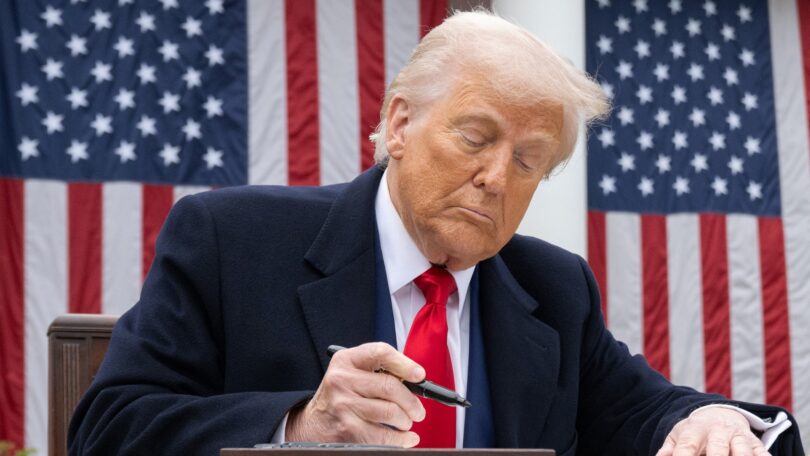President Trump Authorizes Military Control of Federal Lands Along Southern Border
In a bold escalation of border security efforts, President Donald Trump has officially authorized the U.S. military to take operational control of certain public lands along the southern border with Mexico. The directive, issued Friday through a National Security Presidential Memorandum, cites ongoing threats and national security concerns as the justification for a more active military role.
“Our southern border is under attack from a variety of threats,” President Trump stated in the memo. “The complexity of the current situation requires that our military take a more direct role in securing our southern border than in the recent past.”
Building on the Inauguration Day Emergency Declaration
The move follows Trump’s Inauguration Day declaration of a national emergency at the southern border. That order called for a detailed report from Defense Secretary Pete Hegseth and Homeland Security Secretary Kristi Noem outlining the conditions at the border and recommendations for achieving “complete operational control.” Among the options under consideration is the invocation of the Insurrection Act of 1807.
Under the new order, the Pentagon is authorized to exert jurisdiction over federal lands along key border areas in California, Arizona, and New Mexico, specifically the Roosevelt Reservation. Native American reservations are excluded, except where access is necessary to carry out military activities such as border barrier construction and the installation of surveillance and detection systems.
National Defense Zones and Military Jurisdiction
The memo empowers Secretary Hegseth to designate certain federal lands as National Defense Areas, allowing military control under the Department of Defense. The Defense Secretary may also determine what military operations are “reasonably necessary and appropriate” under Trump’s executive order titled “Clarifying the Military’s Role in Protecting the Territorial Integrity of the United States.”
Troops operating under this directive will follow rules of engagement set by Hegseth. The initial phase will be limited in scope, focused on designated sectors of federal land. Within 45 days, the Defense Department is required to assess this phase and may expand operations in coordination with Homeland Security and other federal agencies, including immigration adviser Stephen Miller.
Troop Deployment and Joint Task Force Oversight
In the weeks following Trump’s emergency declaration, the Pentagon deployed 1,500 additional troops to the border, joining 2,500 troops previously stationed there. Leadership of the mission has shifted as well: the 10th Mountain Division headquarters and its commander, Maj. Gen. Scott Naumann, have been relocated from Fort Drum (NY) to Fort Huachuca (AZ) to head the newly formed Joint Task Force Southern Border.
Now overseeing roughly 6,600 active-duty troops, Naumann is tasked with supporting Customs and Border Protection (CBP) efforts in surveillance and threat detection. While the military’s role remains largely supportive, they are not currently involved in law enforcement duties like arrests or detentions—restrictions upheld by the Posse Comitatus Act of 1878.
Border Crossings Decline Sharply Under Trump’s Second Term
The president’s policies appear to be having a significant impact on illegal immigration. According to Customs and Border Protection (CBP) data, illegal crossings at the southern border plummeted to 7,180 in March, a dramatic drop from the monthly average of 155,000 under the previous administration.
Daily apprehensions have also decreased by 95%, down to just 230 per day, compared to over 5,100 daily arrests during President Biden’s term.
Legal Challenges Dismissed
Meanwhile, a federal judge dismissed a lawsuit filed by church groups opposing the administration’s new policy allowing immigration arrests near places of worship. The court ruled that the plaintiffs failed to show any concrete harm or constitutional violation.
Conclusion
President Trump’s latest executive actions mark a new chapter in the administration’s aggressive border policy. With military oversight expanding, federal lands reclassified for defense purposes, and illegal crossings at historic lows, the administration is signaling its intent to maintain strict control over the southern border—and to continue using all available tools to do so.







Leave a Comment